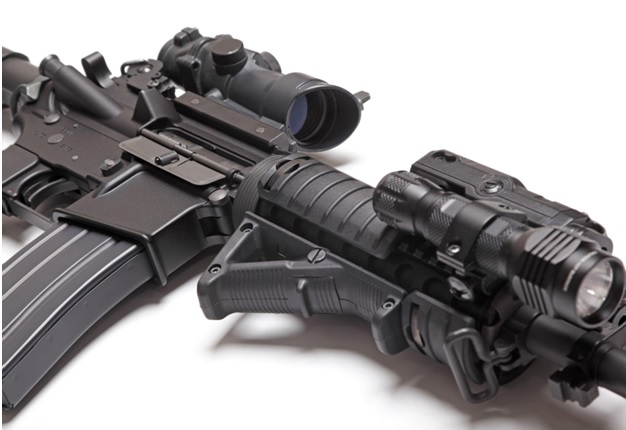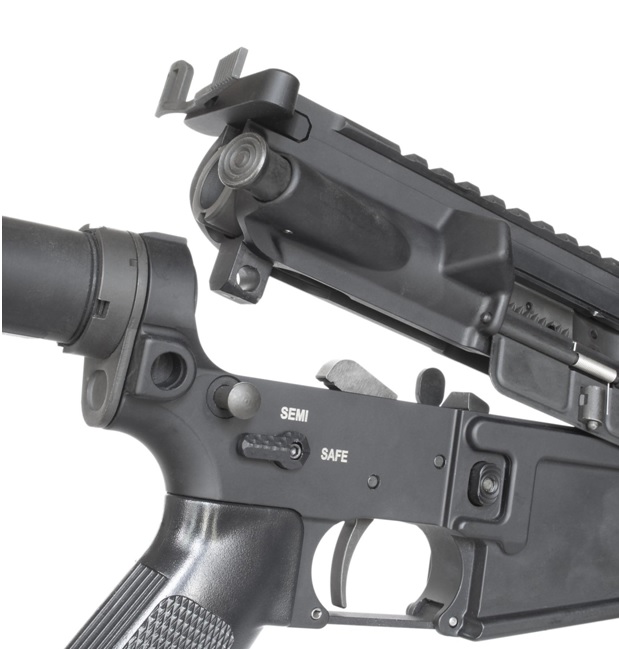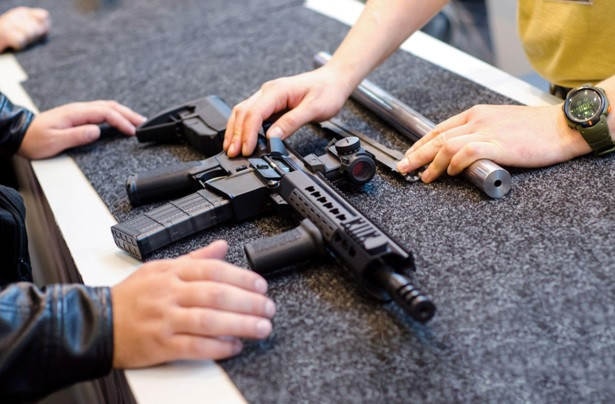So you’ve been reading about .300 Blackout as a serviceable alternative to 5.56 or .223. It is, after all, basically the same cartridge, just loaded with a heavier bullet, and offers numerous sporting and defensive advantages.
Namely, .300 Blackout offers much higher stopping power than 5.56 and .223, especially at close ranges. Yes, it has a pretty sloppy, drooping trajectory and questionable performance beyond 100 yards, but if you aren’t long-range shooting, why should that matter?
This extra stopping power gives it the extra “oomph” it needs to vie with other .30 caliber cartridges as an option for self defense or hunting - there are certainly those that swear by it for deer and hogs, among other sporting pursuits.
Plus, there’s the fact that a lot of parts between 5.56 and .300 BLK platforms are compatible, making a swap (for most shooters) easy.
With that said, here are a few things you need to know, whether you intend to build one with a .300 Blackout complete upper or not.
What You Need to Swap
Good news for anyone that is currently shooting an AR chambered in 5.56. The only thing you need to swap is the barrel. In theory, everything else in your AR, including the complete assembled lower (and the magazines, see below) should work with a .300 BLK build.
Here’s the thing about .300 BLK. It has a lot in common with 5.56/.223, the major difference being that the neck is wider to accommodate a larger, substantially heavier bullet.
But the overall length (2.26” in both cases), case length (1.368” for .300 BLK and 1.760” for 5.56), and base diameter (.367 for .300 BLK and .377 for 5.56) are all very similar, if not almost identical.
As a result, the only part you have to swap is the barrel, to accommodate the larger, heavier bullet of the 5.56. (One note - never attempt to chamber a .300 BLK in a 5.56 barrel as this will likely result in catastrophic failure.)
Theoretically, the .300 BLK will perform just fine with a new barrel, along with the old upper components of your 5.56 build, including the handguard and bolt carrier group, but this is where it gets tricky.
Since the .300 BLK is optimal for use at close ranges (within 100 yards) if you have a longer handguard on there and want to switch to a shorter barrel, you might need to switch the handguard, too.
If you switch the barrel, you may also have to swap the gas system in order to ensure reliability cycling. It may also be the case that you want to switch the bolt carrier group, too.
As a result, it often makes more sense to swap the whole upper just to keep things safe and easy, as a .300 Blackout complete upper is going to have all the parts you need to complete a functional rifle, all you need to do is mate it to the lower.
One more thing: the buffer system. While you might be able to get away with using the same buffer system with a 5.56 and .300 BLK, you may also find as a result of the heavier bullet weight and recoil of the latter, the same buffer weights just don’t perform equally.
That may, however, be something you may have to accomplish via trial and error. Just make sure if the new rifle isn’t cycling as you’d expect, don’t forget to consider a buffer weight swap before you make changes to the gas system.

A Note on Magazines
One thing for you aspiring .300 BLK shooters to note is that .223 and 5.56 magazines are usually compatible with .300 BLK cartridges, but there are a couple of things you should know.
One is that you need to be absolutely meticulous about keeping track of what is loaded, and where. You never want to accidentally load a .300 BLK cartridge into a 5.56 chamber. It shouldn’t work anyway, but that is not something you want to test, as the results will be catastrophic, and could result in serious injury or fatality.
One good way to get around this is to color-code your magazines with bright tape so you can tell your dedicated 5.56 and .300 BLK magazines apart.
The other is that if you do keep your old magazines and load them with .300 BLK, that you’re aware of the limited capacity. Because of the wider bullet diameter, a standard 5.56 magazine will probably not accept as many rounds of .300 BLK, so you’ll be shooting on a limited capacity.
On the same note, some shooters have reported feed problems when trying to use 5.56 mags for .300 BLK - so if that concerns you, just get dedicated .300 BLK. If you’re already putting the money into a new barrel or a .300 Blackout complete upper, a couple of mags will only be pennies by comparison.
Fine, Is There a Reason to Build Using a .300 Blackout Complete Upper?

Yes, good reason, too. One is if you aren’t comfortable making a barrel swap. With a .300 Blackout complete upper, all you need to do is reconnect the assembled lower and upper together and you will have a fully-functioning .300 BLK rifle.
The other is that all the parts will be compatible with each other. For instance, if you swap the barrel but change to a different size, you might have to experiment with handguards, muzzle devices, and gas systems to find the right combo. With a complete assembled upper, all that legwork is done for you.
Another reason is you might be able to save a bit of money by buying all the parts bundled in an assembled upper.
Start with a Complete Upper (and Parts) from MCS Gearup
We carry .300 Blackout complete upper in our assembled upper collection, but we also carry barrels, buffer tubes and weights, magazines, and bolt carrier groups, muzzle devices, and more. Contact us at Sales@MCSGearup.com if you have any questions before buying.

